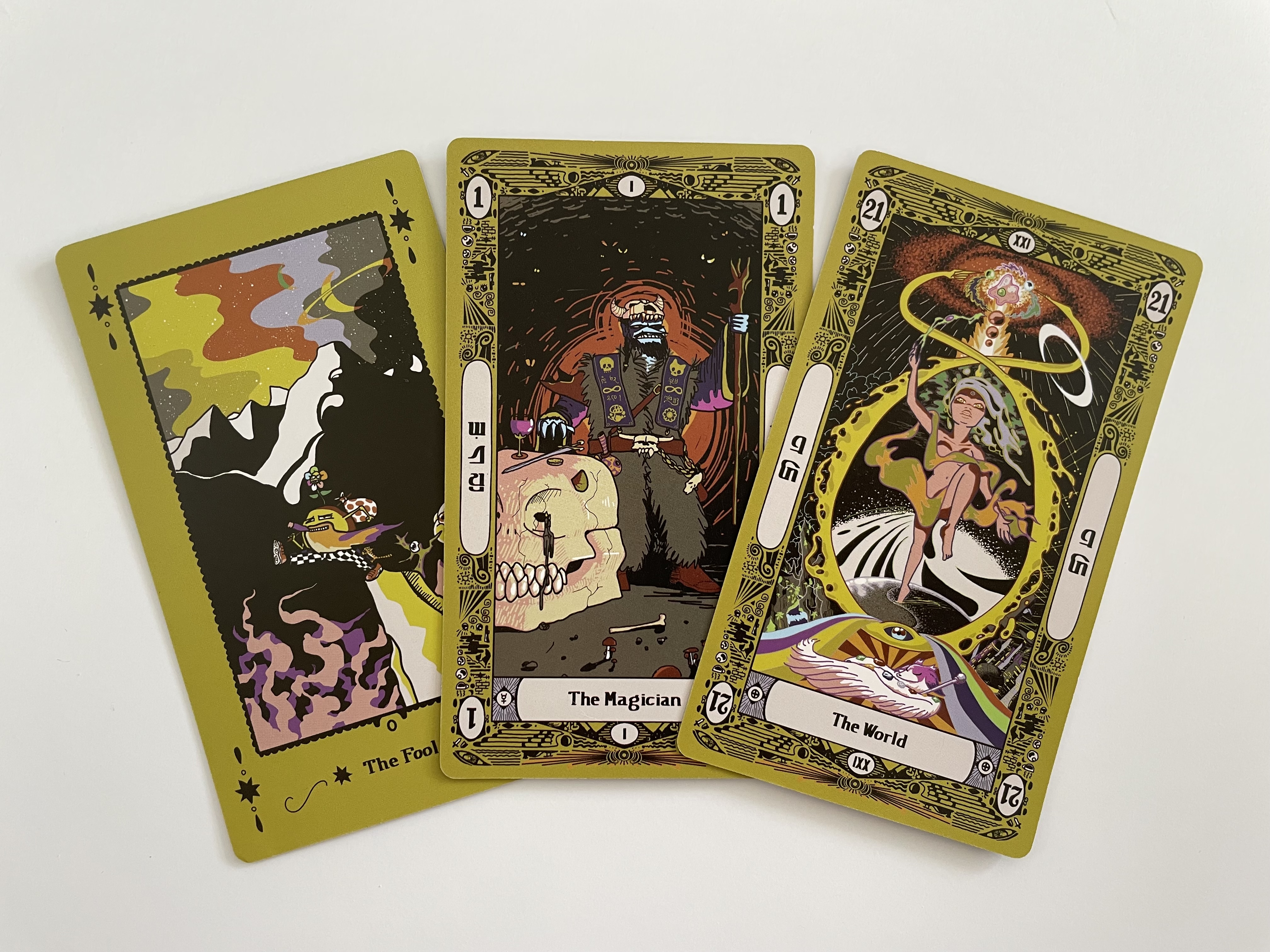
This is a trick-taking game for 3-5 players. Aces (1) are always low. Trumps (Major Suit) always take the trick, no matter what suit is led. Play is simple, fast-moving, and highly strategic.
The objective of the game is to have the most points at the end. Because there are both positive and negative points, the game is more interesting as more hands are played, and things can change quickly.
Different cards have different point values. All values are positive, except for Swords and The Moon, which are negative by default. However, they may become positive depending on how many of the three Honors one player can collect--this will be discussed in more detail shortly.
| Card | Points |
|---|---|
| Pips (1-10) | 1 |
| Page (P) | 2 |
| Knight (C) | 3 |
| Queen (Q) | 4 |
| King (K) | 5 |
| The Moon (18) | -18 |
| All other Majors | 0 |
Without Honors collected, there are 72 positive points and 42 negative points in the deck.

The three “Honors” in the deck — The Magician (1 of Trumps), The World (21 of Trumps), and The Fool — have no score value themselves, but how many a single player collects determines the final value of the Swords and Moon. The more Honors you collect, the better:
But there's a bit of a catch to it: if a single player collects these many Honors, it will change the point value for all players. If Player A collects 2 Honors and then Player B gets the Moon, that means Player B gets +18 points!
The Fool is a special card that serves as an “excuse”: it does not take the trick, nor is it taken itself (normally). The player may show it, and then keep it in their pile, avoiding a card they do not want to play. If the Fool leads a trick, the next player can lead anything and their play determines the suit. The Fool is always taken on the last trick.
Cards are dealt counterclockwise. After dealing, a few cards are left for the "Moondog" (removed from play for that hand). Nobody is allowed to see what's in the Moondog, so as to add just a bit more uncertainty to each hand.
Each player can pick up and look at their hand, but must not (or at least should not) show it to anybody else. It is advised to sort the cards by suit, and then by number.
Bad Moon is a trick-taking game: if you've ever played Hearts, Spades, or something similar, it works just the same, and you can probably skip this bit. If you haven't, we'll try and lay it out for you.
Each player starts a hand with the same number of cards. The player with the Ace (1) of Batons goes first - if it's not available, then the next lowest Baton goes. The first card is placed into the center of the table. The next player clockwise then must play a matching suit, if they have one. The player after them does the same, and so on until every player has put a card in. The highest card of the first suit played determine who takes the trick. The winner of the trick then takes the cards and puts them aside into their own pile, to be counted at the end of the hand. They then lead the next trick with whatever card they like, although they cannot lead Swords or the Moon at the beginning - this will be explained shortly.
If a player cannot play a matching suit (or follow suit), then they may play any other card they like. If they play a Trump, then they will take the trick, even if Trumps are not the leading suit. That is why they are Trumps! (Unless someone else plays a higher Trump, in which case that one takes the trick.) If they choose to play Swords or the Moon, then they are considered "broken" and players may now freely lead with Swords or the Moon.
A short version of these rules is below:
At the end of a hand, players count up cards in their pile based on the scoring rules. Points are added or subtracted from each player's cumulative total. Play continues for 8 hands or until a decided limit.
If you create any variant rules of your own, send them to the author to be featured on the website!